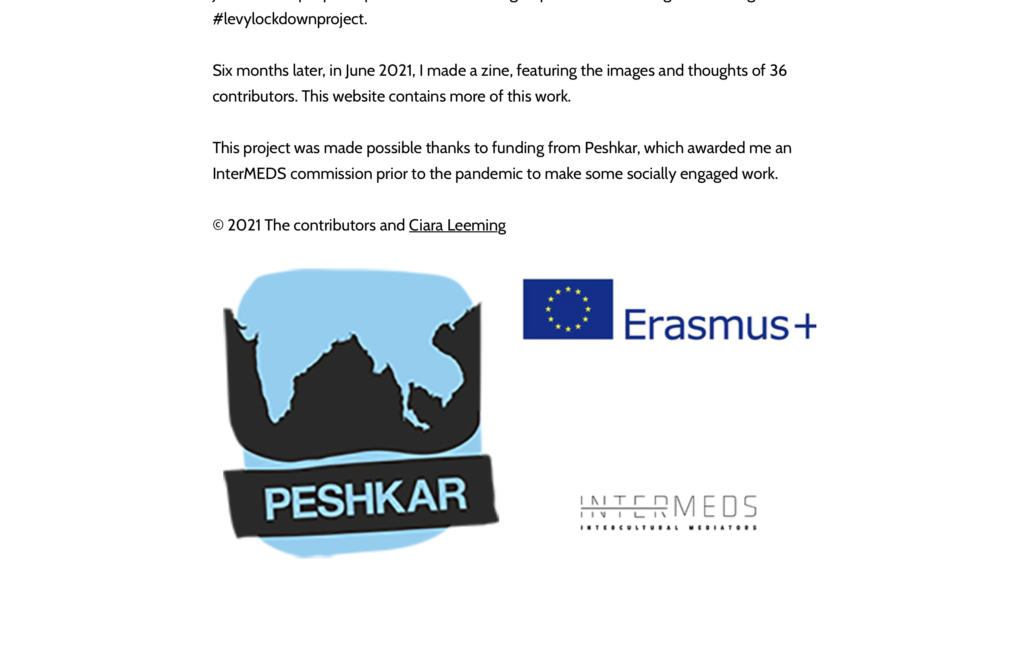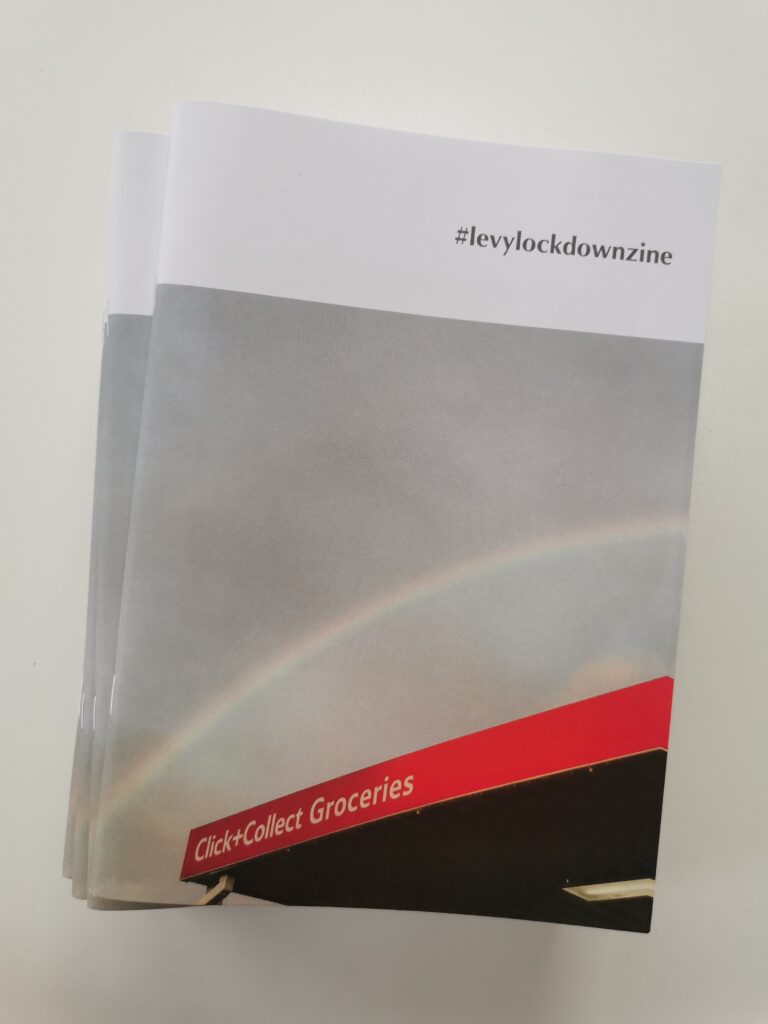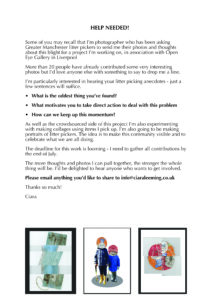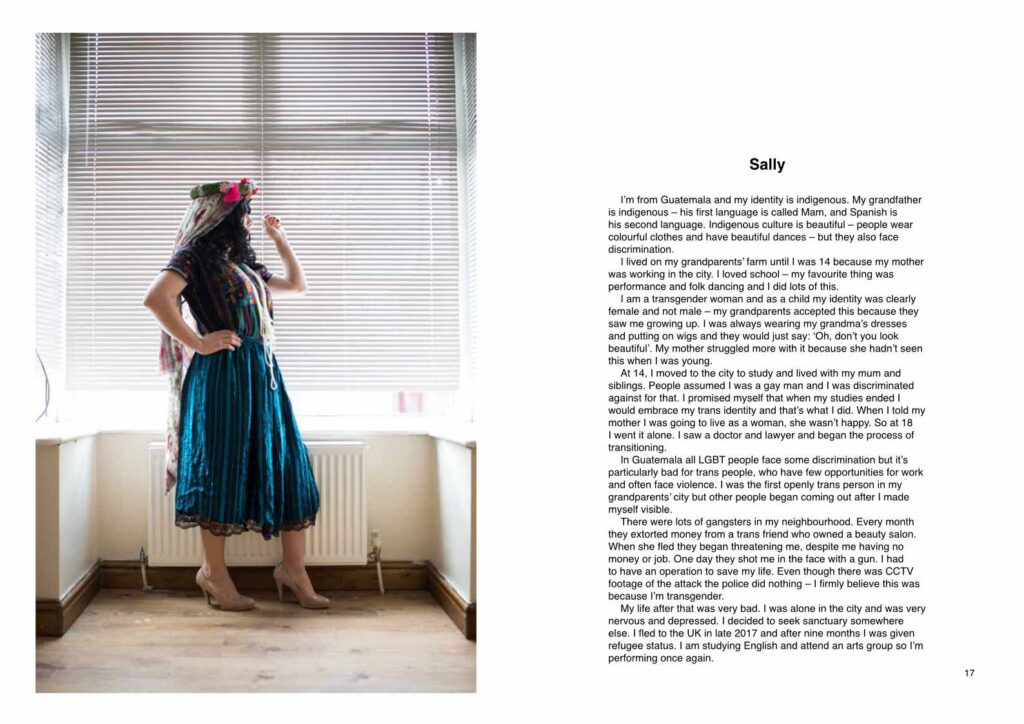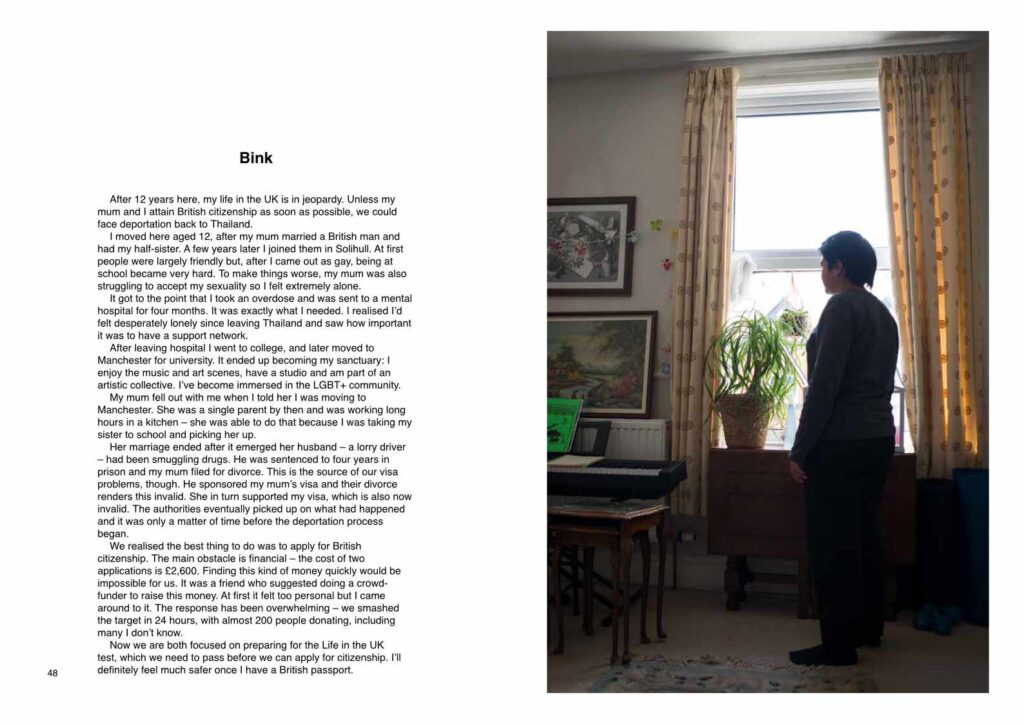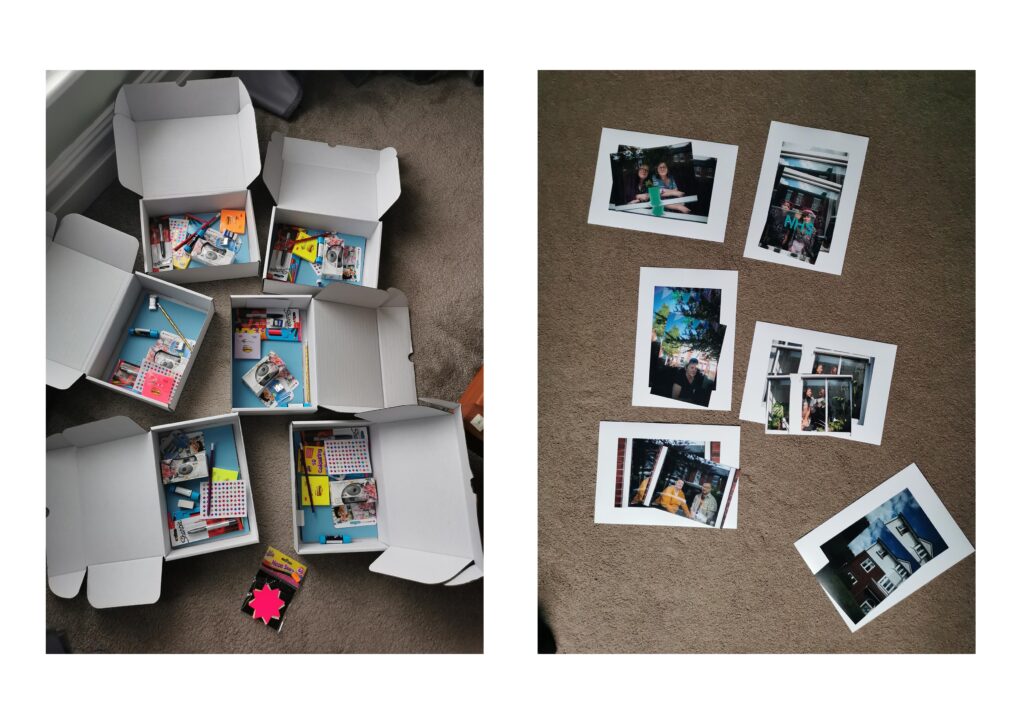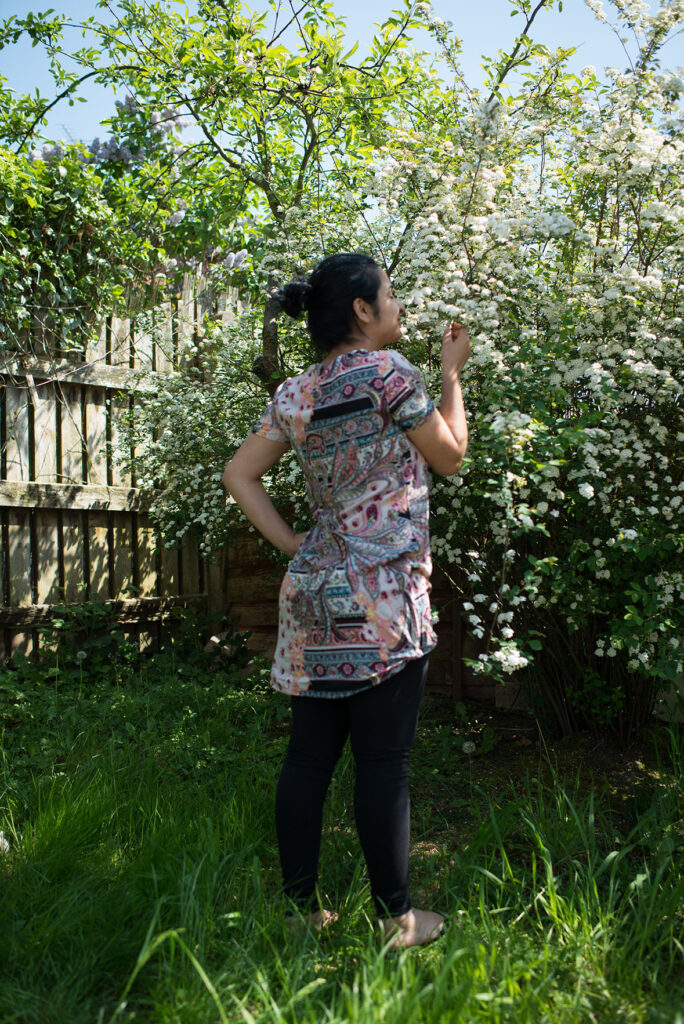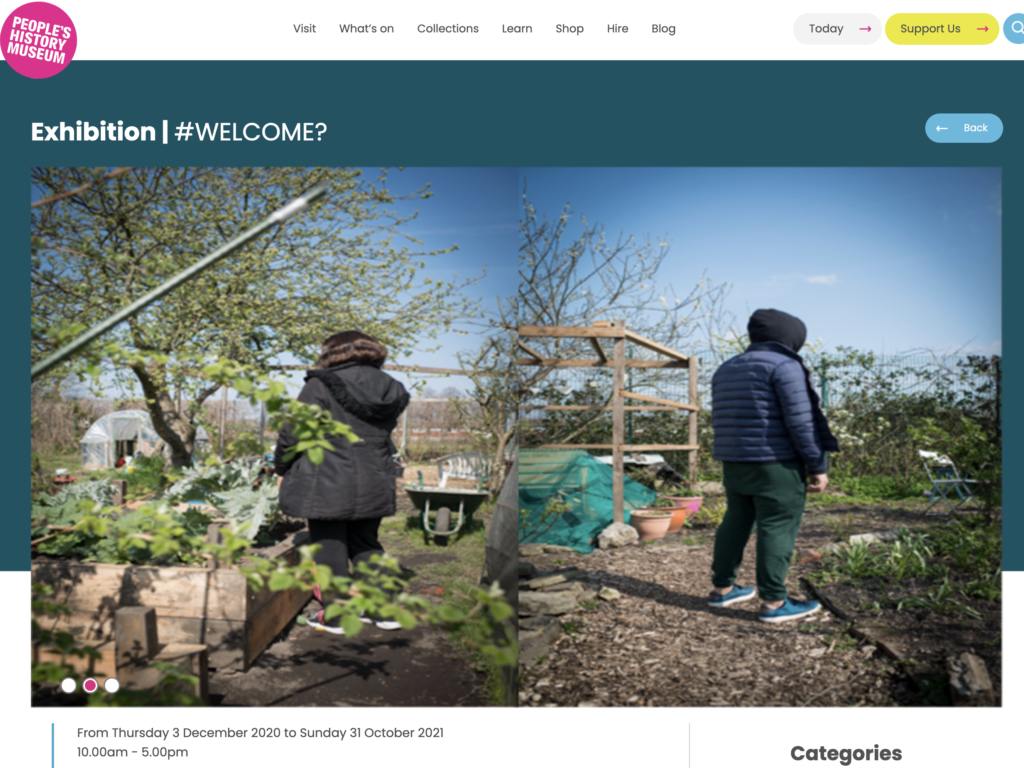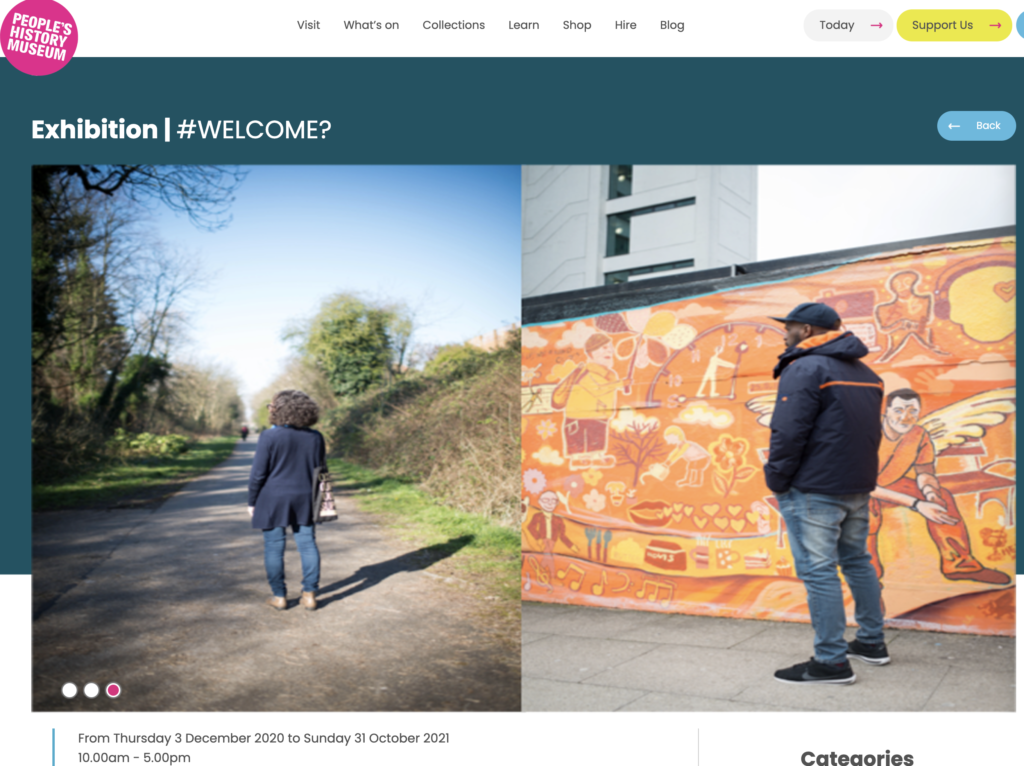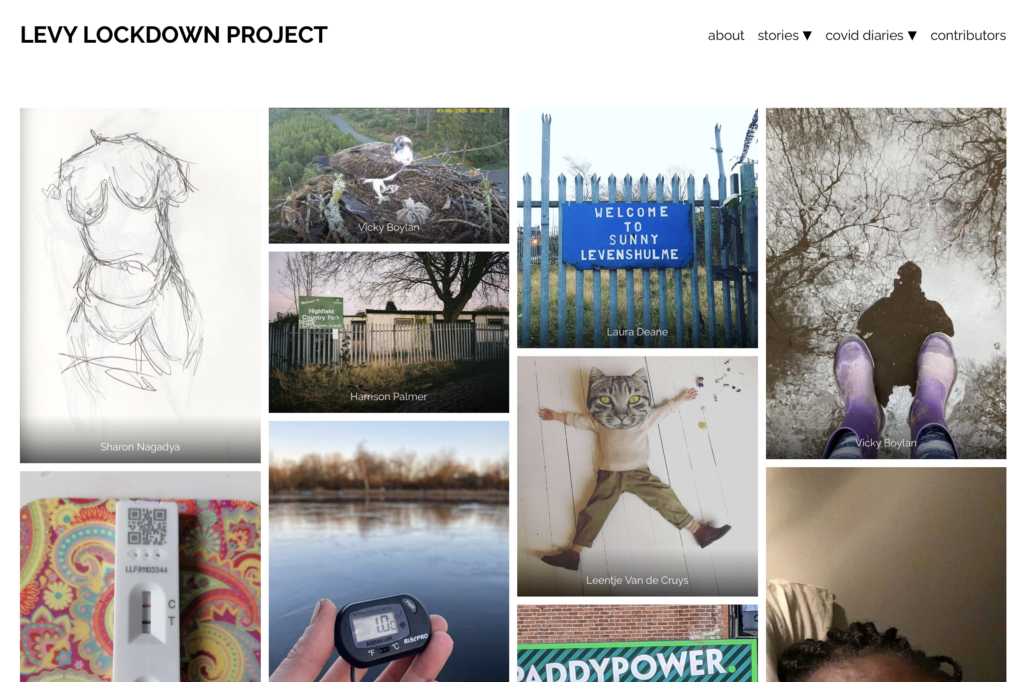
Since January this week I’ve been working on a loose socially engaged project in my neighbourhood of Levenshulme, where I’ve invited local residents to send me their thoughts and images relating to the past year and how Covid-19 has impacted their lives.
This was funded via an InterMEDS commission which I’d been awarded by Peshkar in Oldham early in 2020 – pre-pandemic, my proposal had been to run a participatory project with Roma young people, but this plan naturally had to evolve as the world shut down. Gone were the opportunities to work face to face – instead, and inspired by my experience on Open Eye Gallery’s professional development course, Crossing Sectors, I turned my attention to my immediate community and tried to build on the network I’d developed through last year’s work on Levy Lockdown Portraits.
Over the Christmas holidays I handed out some creative kits to six local women – including disposable cameras, journals and some prompts. The timing ended up being quite fortiutous as we soon found ourselves in our third national lockdown – a bleak time where it felt dark and depressing and where all schools were closed for the second time.
Participants had a lot to say about what was going on – and I realised there was no reason why I couldn’t open out this to more people. So I set up a little Facebook group and put an open call on instagram and people started sharing work. In June I put together a zine featuring 36 people’s contributions but there was still more to see, so I’ve now pulled it all together into a website, Levy Lockdown Project.
This features everything I was given during this period – from full on journals, to photos and sketches. 42 people are on there and I have no work there except as a curator/facilitator. There are also a few audio interviews which I’ve conducted with three of the original creative box participants.
I’m pleased with this work – its my first true socially engaged project. I’ve learned a lot – it’s been quite a loose project with no workshops and most of the interactions have been digital, but I think it is an interesting community archive and a lovely companion piece to last year’s window portrait book and our zine.
Thanks to everyone who got involved and shared their thoughts and work. And thanks to Peshkar for the commission, and to Eurasmus and InterMEDS for the funding.
